1-Line Summary: Learning How To Learn by Barbara Oakley is a definitive guide to learning and mastering any subject or skill quickly using the practical knowledge of neuroscience.
Who should read this book summary?
Interested in learning how to learn fast and effectively?
Researching neuroscience?
Curious about your brain?
If you answered yes to any of the above questions, this book summary is for you, my friend.
This book summary will help you become better at literally learning anything in general.
And thus, it will help you master anything in life.
Purchase this book on Amazon: Paperback
Best Tools for Bibliophiles
- Listen to your Favorite Books on The Go: Try Audible and Get Up To 2 Free Audiobooks | Get 3 Free Audiobooks
- Read over 2 million e-books on any device: Sign up for 30 days free trial of Kindle Unlimited and read your favorite titles.
- Get free 2-day shipping of your favorite books and stream premium TV shows on Amazon Prime: Sign up for 30 days free trial of Amazon Prime.
- I use Notion to take reading notes, plan everything, and run all my businesses. (Notion is my Second Brain 🤯): Get Notion for free for personal use (paid for teams/businesses)
About The Authors Of This Book
Before we dive into the book summary, let’s learn about the authors.
This book is written by three authors:
- Barbara Oakley“She is a Professor of Engineering at Oakland University in Rochester, Michigan, and Coursera’s inaugural ‘Innovation Instructor.’ Her work focuses on the complex relationship between neuroscience and social behavior.” (source)
- Terrence Sejnowski (@sejnowski) “Terrence Sejnowski is a pioneer in computational neuroscience, and his goal is to understand the principles that link the brain to behavior. ” (source)
- Alistair McConville (@AGMcconville)”Al is the Director of Learning and Innovation at Bedales School, Co-founder of Rethinking Assessment, TES writer, and the co-author of this book.”
(Please note that I’ve linked to the relevant pages so that you can learn more about the authors and follow them on Twitter.)
To read exciting and funny stories from their lives, I recommend that you read the book.
Learning How To Learn Summary (PDF)
Ever thought about how your brain is capable of thinking so much?
How does memory work? Where are all the memories stored in the brain?
Why do we remember some ideas and forget the others?
Is there any way to tap into our brain and enhance our learning and recalling ability?
What if you could remember everything you read?
What’s the best way to learn and master any concept?
In this book summary, you will find some answers to such questions.
Sounds interesting, doesn’t it?
It is pretty interesting!
So without further ado…
Let’s dive right in!
Lesson #1: When you struggle to solve a problem or learn anything new, try to relax for a few minutes. And then try again later.

Although we have a complex brain capable of solving many problems, it still has its limit.
Our minds work like machines…
Just as machines need to cool down after working for hours — after taking a huge load — we also need to take breaks after doing any tedious work.
The author talks about why we often get stuck while solving problems.
Problems can be of any type.
From our life to relationships, from health to money, there are many problems.
We all have got lots of problems in our lives, haven’t we?
The question is:
Why do we often get stuck while solving problems?
The author talks about this in the first chapter.
The thing is:
Our brain has two types of modes:
- Diffused Mode
- Focused Mode
Diffused Mode is when you are not using your brain too much.
This includes fun activities like watching a thrilling movie, staring at the ceiling, listening to music, chatting with your friends, etc.
In short: All those activities where you don’t have to think much are performed under Diffused Mode.
It’s usually a chilling time for your brain or mind.
Focused Mode is when you are putting stress on your brain.
This includes playing chess, solving mathematical problems, preparing for competitive exams, thinking about complex questions like “Does God exist or not?” etc.
In short: All those activities that force you to pay attention and use your willpower are performed under Focused Mode.
It’s usually the work time for your brain or mind.
But why are we discussing these?
Let me explain.
To learn anything, you don’t need to be talented.
The author says that even if you are not talented at any subject, you can still become good at it.
How?
Simple, by learning it.
You can learn any subject with practice.
But the question is:
What’s the best way to learn anything? (After all, the book is about learning how to learn.)
So, according to the author, the best way to learn anything and not get stuck is to practice both the ‘diffused mode’ and ‘focused mode.’
Often people make this mistake:
They either keep themselves in Focused Mode and not allow themselves to relax, which is Diffused Mode.
Or they hardly pay attention to the problem, so naturally, they fail to solve it.
The best strategy is to switch back and forth between both modes multiple times.
So, when you get stuck, take a break. Look outside and watch other people.
Or listen to your favorite song.
Just get away from your desk and take a walk.
Drink some water.
Or you may watch funny cat videos on YouTube.
Do whatever you want.
Give your mind some time to relax.
And then come back later and attempt to solve the problem once again.
Will this solve your problem?
It may or may not. There is no guarantee.
But as we have learned repeatedly, our subconscious mind is always working in the background.
So you might get some ideas or answers to solve the problem at hand.
Now, this might sound like a magic trick. But it’s not!
If you haven’t done any preparation, you won’t excel in your exam!
I’m trying to say that the technique of focusing and diffusing only works when you have some information regarding the problem you are trying to solve.
Let’s say you are solving a thermodynamics problem.
If you don’t know even the basic equations, you won’t be able to solve the problem.
Why? Your foundation hasn’t developed yet.
A little relaxation of mind won’t magically make you an expert in that subject.
That’s why the author says that in the beginning, before starting to learn anything, you will need some focus.
Until you gather enough knowledge, your relaxed mind won’t come up with solutions.
Also, if you lose your focus while learning anything, you don’t have to feel guilty.
It will only help your brain to learn faster.
Breaks not only allow your mind to refresh, but they also give you time to have fun.
Having fun is not bad. It makes you more productive. (Just make sure that you don’t forget about your problems)
That way, you will enjoy your work even more.
And even if you fail to solve problems or learn anything, don’t fret about it.
Take a break. Keep trying!
Hopefully, you will find solutions to almost all your problems.
The takeaway: The focused and diffused modes of the brain help us learn anything faster and avoid unnecessary stress on our brain.
Lesson #2: Procrastination gives you instant pleasure, but it hurts you in the long term. And makes you highly unproductive.
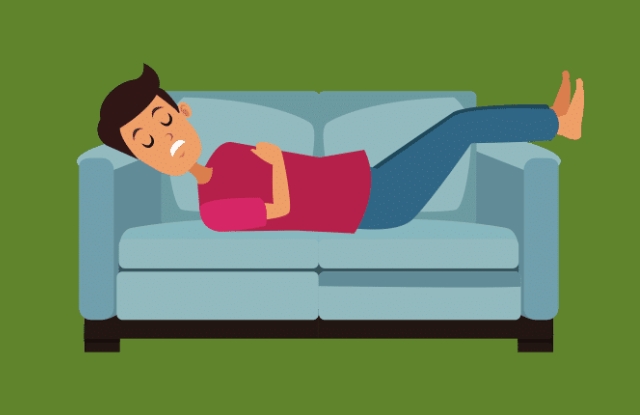
Let’s admit it.
We all procrastinate when doing monotonous tasks like studying or preparing for an exam.
Okay, maybe you are a nerd like me and face no such problem. But then you might procrastinate before doing other tasks that you don’t like.
The big question is:
Why do we procrastinate so much?
Wouldn’t life be simple if we could do anything we set our mind to?
Procrastination is one of the biggest time killers, isn’t it?
The author’s research says that the same brain area is affected when we think about doing something we don’t like and when we get hurt.
Didn’t get the point? No problem.
Do this exercise right now:
Think about doing something you hate doing.
Done? Okay.
Now notice how did you feel? Did it bring bad feelings?
Did your mood change?
If you performed the exercise, I hope you might have felt a change in your thoughts.
Maybe you had a silent voice:
I don’t want to do this. It’s boring!
We procrastinate because we don’t want to feel pain — the pain of doing something we don’t like.
But if you observe your mind, you will find that often we exaggerate the pain.
Once we start doing that boring thing, that uncomfortable feeling goes away.
That’s why the author says that you should use Pomodoro Technique.
Set a timer for 25 minutes and do whatever you want to do with focus. After that, reward yourself.
It’s a way to trick your brain into thinking everything is normal. It simply stops your mind from overthinking a particular task you don’t like doing.
It’s up to you how many times you use this technique.
I don’t practice Pomodoro.
It’s only suitable for those people who struggle too much while focusing.
I have never faced such issues. And when I do, I start doing something else to refresh my mind.
Now you know how to deal with procrastination.
But why are we putting so much energy into dealing with procrastination?
That’s because when you procrastinate, you lose your precious time.
Once it’s gone — it’s gone!
And if you keep procrastinating for an extended time, your productivity is ruined.
You become an inefficient person.
You produce less output than you can.
And as we discussed in the book summary of Atomic Habits:
Once these bad habits are formed, they also affect other aspects of our lives.
The mind is always the same — no matter what you do.
You carry that same mind wherever you go and whatever you do.
That’s why dealing with procrastination is super important.
I’d suggest that you record the time you waste procrastinating and try to do it less by using a few techniques.
But remember, such techniques don’t provide permanent solutions.
So don’t feel surprised if you find yourself repeating those same old habit patterns.
The takeaway: Procrastination kills your productivity. Use the Pomodoro technique to deal with it.
Want to try the course by the authors of this book?
If you love the ideas in this summary, you might enjoy watching the course by the authors.
The authors of this book, Barbara and Terry, are some of the top-rated instructors on Coursera.
In case you don’t know about Coursera…
It is an online course platform that also gives you certificates you can use to showcase your skills.
They have a course that teaches similar concepts…
You can access the course by clicking the link below:
Learning How to Learn: Powerful mental tools to help you master tough subjects
“This course gives you easy access to the invaluable learning techniques used by experts in art, music, literature, math, science, sports, and many other disciplines.”
It’s up to you, though.
If you choose to receive the certificate for doing this course on Coursera, it’d be great.
And if you choose the free method, you won’t get a certificate of completion.
I recommend you go for the certificate.
That way, you will be able to showcase it in your resume and impress everyone.
Lesson #3: Think in metaphors to learn faster.
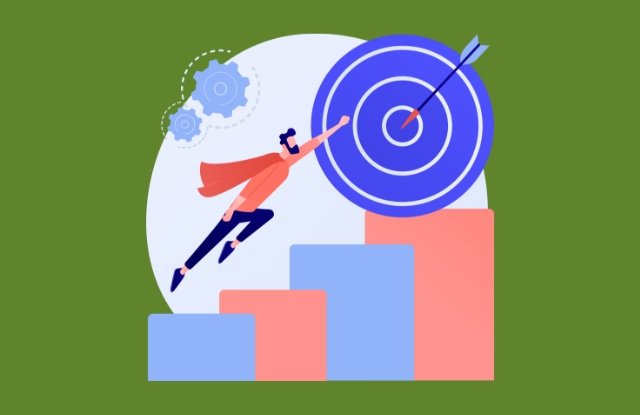
The author says that metaphors help us learn faster.
What are metaphors?
According to Wikipedia:
A metaphor is a figure of speech that, for rhetorical effect, directly refers to one thing by mentioning another.
Put simply, when you try to relate an unfamiliar thing with something familiar, you use a metaphor.
How does this help you learn faster?
Let me explain with an example.
Let’s say you are learning about “photosynthesis.”
It’s a process by which plants make their food using sunlight.
Some people might find it challenging to remember the word “Photosynthesis.”
To remember this, you can imagine a person with a camera taking a photo of a chef preparing food.
Got it?
“Photosynthesis= Photo + Synthesis”
‘Photo’ is represented by the camera. And the chef represents the entire process of ‘synthesis.’
Can you imagine it vividly?
It’s okay if you find it a tad bit weird.
The more vivid you are in your imagination, and the better relationships you form between the ideas, the better will the metaphor help you remember concepts.
This trick is handy for people who want to remember concepts. Especially those who find it difficult to remember anything.
By drawing associations and using your imagination, you can develop unique metaphors.
But do you know why metaphors help us remember and understand concepts better?
It’s because, with every metaphor, you create a link in your brain, says the author.
Think of your brain as stars in the sky.
Now imagine all the stars connected to each other.
Done? Okay.
You will now see a spider-like web.
Our brains are similar to the webs of spiders.
There are countless neurons connected to each other.
The more the connections, the smoother the processing in your brain.
You don’t need to go into technical details. Just understand that your brain is an interconnected web of neurons.
If you want to learn more, you can read articles about neuroscience.
So, metaphors help you create new links or connections. Which, in turn, helps you learn faster.
The takeaway: Metaphors are a great way to learn faster. Use metaphors while you study complex concepts in complex subjects. Example: Periodic Table in Chemistry.
Lesson #4: Learning has no age. Even adults in their 40s or 50s can learn new stuff!
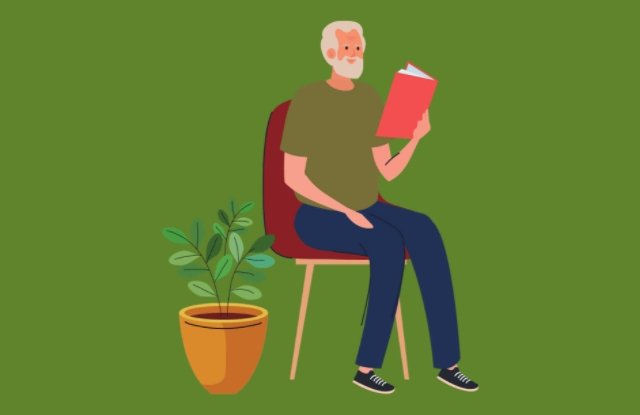
One of the authors, Al, talks about one of his exciting life stories in this book.
He talks about how he learned Chemistry as an adult — when he had no clue about Chemistry.
So if he can learn a new subject during his 40s, you too can learn new stuff.
Most people stop learning after they graduate and get a decent job. They think they know everything, and now there is no obligation to learn.
But that’s not true.
There is always something to learn.
This reminds me of the quote:
“Anyone who stops learning is old, whether at twenty or eighty.”
Henry Ford
How did the author learn Chemistry even though he sucked at it at first?
He says that he took the help of his friends, who were good at it.
He also used metaphors to remember complex concepts.
The main thing that helped the author was his will to learn.
Despite being 42 years old, he didn’t give up on learning.
It might sound like a motivational story, but it’s not.
The point is:
You should never stop learning new things.
It’s fun!
I don’t know why people stop reading books when they grow up.
Al didn’t have to learn Chemistry, but he still challenged himself. People said that he didn’t need to put in so much effort.
But still, he kept learning.
And ultimately learned it.
I am still learning.
Michelangelo
The takeaway: If you are determined enough, you can learn new subjects — regardless of your age. A person’s age shouldn’t be a barrier to learning new topics.
Lesson #5: Sleeping is vital for your brain connections to become stronger and sturdier.
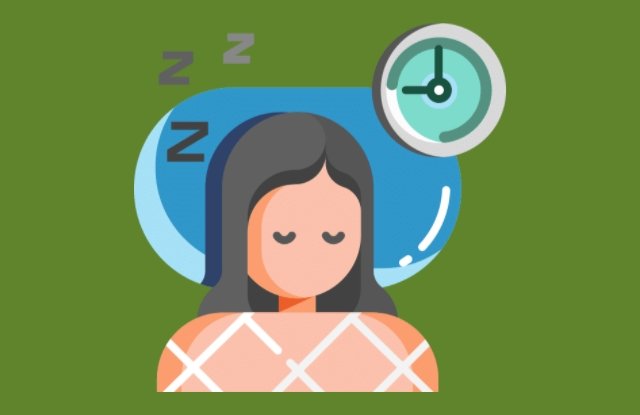
The author talks about the importance of sleep.
According to the author and research based on neuroscience, your brain changes while you sleep.
This means:
New connections are formed in your brain. Also, some of them are destroyed too.
The main idea here is:
The more you think about something, the stronger the connections become in your brain.
And after you sleep at night, the links in your brain transform.
This helps you learn faster.
It’s highly recommended that you take a sound sleep.
Otherwise, you might face problems while remembering ideas.
Students need to sleep at least 7 hours before their exams.
The author doesn’t support the idea of cramming.
She says that your brain won’t get enough time to form and strengthen new connections if you cram. So, you’ll find it hard to recall ideas while taking your exams.
The author also recommends that you teach your ideas to others as well.
This will help you recall your ideas even better.
The brain makes the connections broader and more robust whenever you repeat an idea. And thus, it allows you to recall quickly.
How fast you recall an idea depends upon how strong your connections are related to a topic.
But it’s also common for some people to recall the same concept faster than others.
It’s a natural process.
Just as we all have different faces and fingerprints, the ability to form connections quickly in the brain differs from person to person.
And we don’t even realize when such neural connections are formed. It’s an unconscious process.
I can bet that you learned about this neuron stuff just now.
Most people don’t even know that they have neurons inside their thick skulls.
If you think that you would excel in your exams by starving yourself of good sleep and reading for hours without taking a break, you should think again.
By taking a good sleep at night and giving your brain time to form new connections, you’ll do even better.
That’s why most adults ask their kids to study in the morning and avoid late-night studies.
But you know, it differs from person to person.
I have seen many friends reading at night and still doing fine in the exams.
But ideally, you should allow your brain some time — if you want to be highly efficient at learning new complex concepts.
Avoid oversleeping, though.
You can’t do it like this:
No practice and only sleep.
This will not help you at all.
Remember that without practicing something repeatedly, you can’t become good at it.
I highly recommend reading the book Chop Wood Carry Water by Joshua Medcalf.
It will help you understand the importance of practicing with lots of patience.
The takeaway: Give yourself a decent sleep every time you study something. And allow your brain some time to rest and form links. Don’t sacrifice your sleep. It won’t help you much.
Lesson #6: Use memory palaces to remember cold facts
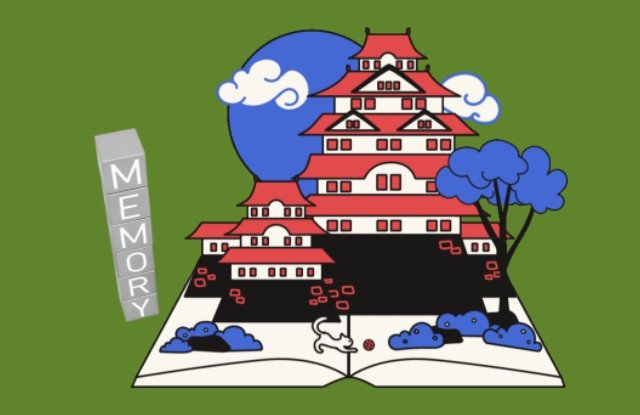
To understand how memory palaces work, you first need to understand a bit about memory.
According to this book, we have two types of memory:
- Working memory
- Long-term memory
Presently, when you are reading this book summary, you are using your working memory.
The problem with working memory is that it’s very limited.
You can only keep 4-5 things in this memory at a given time.
You will find it even harder, especially if you try to remember boring facts like history dates.
You know, this is why not everybody can be a good juggler.
When it comes to long-term memory, it has no limit.
It’s like a vast ocean.
But the problem with long-term memory is:
Things are out of order.
Try remembering something that happened to you in the past.
Yes, do it right now.
Can you recall everything in detail?
Maybe you can — if you have a powerful recall ability.
But usually, you won’t be able to remember every single detail.
Long-term memory is always in fragments.
While using it, you have to connect the fragments and form a picture.
And unless you put the correct pieces in a specific order, you feel lost.
The best part is:
You can store an almost unlimited amount of information.
Just think about the devices today.
Even today, we struggle to keep the data.
No storage device can store an infinite amount of data right now.
But your memory can. Sure, it will be in fragments, but if you learn how to do it right, you can make good use of it.
The author relates working memory with a school bag and long-term memory with a locker.
You can only put so much in your school bag. But you can put a lot more in your locker.
The author talks about using Memory Palaces to retain the information in your brain.
You can imagine putting facts with weird character names in a room. And imagine them as if they are real-world objects or people interacting with each other. Each having a unique quality.
There is no hard and fast rule.
It’s about how creative you can be.
You can create anything in your imagination.
How does it work? Why do you retain more information when you imagine a memory palace?
It’s because we naturally remember images better than we do text.
Think about all the movies you watch. They remain in our memory for many days after we watch them. Don’t they?
Somehow, our memory is better suited to remember visuals.
If you struggle to remember a complex concept, try to create a story.
Imagine all the details in your head.
And try to make some sense of that story — no matter how funny or weird it is.
It’s a fun activity. And helps a lot while studying.
Like anything else in this world, some people have a fantastic memory. They hardly forget anything.
But on the flip side:
Some people can’t even remember their addresses and phone numbers.
If you are one of those, you should master creating memory palaces.
Yes, it will also require some practice.
Creating memory palaces is a technique. So with practice, you will get better at it.
Usually, people don’t use such techniques. (including me)
But if you are in a profession like journalism, where you have to keep numerous things in mind, you should consider researching more about memory palaces.
Here is a great article that teaches you how to build your memory palaces.
The Takeaway: Humans are visually better learners. So use visual memory techniques like creating memory palaces, flashcards, etc., to retain the information for an extended period.
Lesson #7: Exercise is good not only for your body but also for your brain
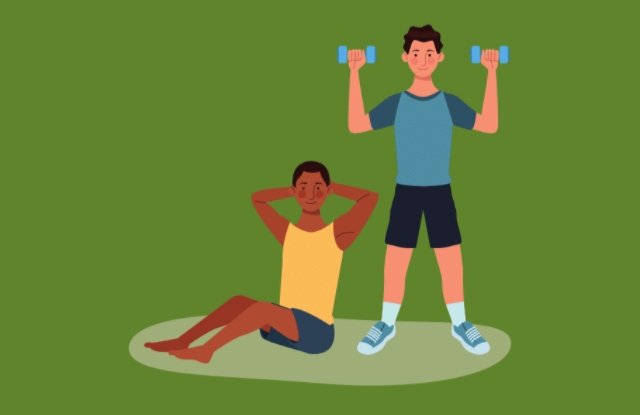
In the 11th chapter, the author talks about why exercise is crucial for developing the brain.
We know that there are neurons in our brains connected to each other. And the stronger the connections are, the better it is.
But do you know where these neurons take birth?
There is a region inside the brain called the hippocampus.
That’s where all the neurons take birth.
The more you exercise, the better it is for that part.
Also, when you exercise, the brain produces a chemical called BDNF.
Now, you don’t need to learn chemistry here.
The main idea is:
BDNF helps in the growth of neurons and synapses.
It’s like a catalyst.
It speeds up the development of your neurons.
That means:
You must never skip your daily exercise.
We all know that exercise is good for our health overall.
But people often struggle to maintain consistency when it comes to doing exercise.
Well, that happens because we don’t properly understand the functioning of our body and brain.
So, we think that it’s not a big deal to skip exercise once in a while.
But if we think like the author, repetition is essential for the neurons to make stronger links.
Let me give you an example.
Let’s say you are learning guitar.
So, most trainers start teaching scales and chords in the beginning. You have to make weird shapes with your fingers — the shapes you have never made in your life.
That’s why beginner guitarists struggle a lot.
That is the time when new neurons are born inside the brain.
And over time, it becomes routine.
The only condition is:
You have to be consistent.
Consistency helps your brain a lot while forming new connections.
The takeaway: Never skip your daily exercise. If you are working on a skill, do it consistently.
Lesson #8: Neurons are sophisticated tiny computers in your brain
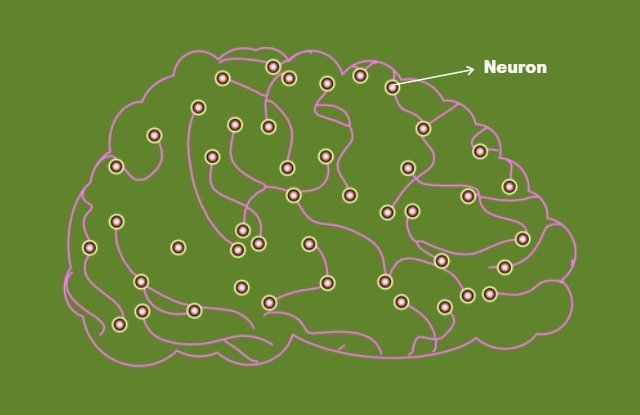
The author says that neurons are like billions of tiny computers connected to each other.
If you look at any computer…
You will realize that it can perform many computations within seconds.
Now try it yourself.
Can you solve complex calculations within seconds?
I bet you won’t be able to even add numbers with more than four digits in your head.
Or can you?
The conclusion is:
Our brains are different from computers.
But wait…
Didn’t we design computers?
Of course, humans took a lot of inspiration from our brains.
Can computers do all the things we do?
Never.
No matter how advanced a computer is, it will not be able to do the same things as us.
It’s still hard to understand the source of all the energy behind the neuron.
But let’s just not enter that domain, as it will require more research.
Let’s just stick to the neurons here.
We got many tiny computers inside our heads.
And we can’t operate them like we do our PCs.
We can only enhance their growth by exercising daily and taking a healthy, balanced diet.
It should be easy, right?
The author advises that you shouldn’t eat processed food items as they are stripped of nutrients and added with artificial flavors.
In short, most processes or packaged food items don’t give you nutrition. But they sure give you a fake sense of healthiness.
The takeaway: Neurons are in billions of connections. Every neuron is like a mini-computer.
Lesson #9: Focus on different aspects while studying a new subject
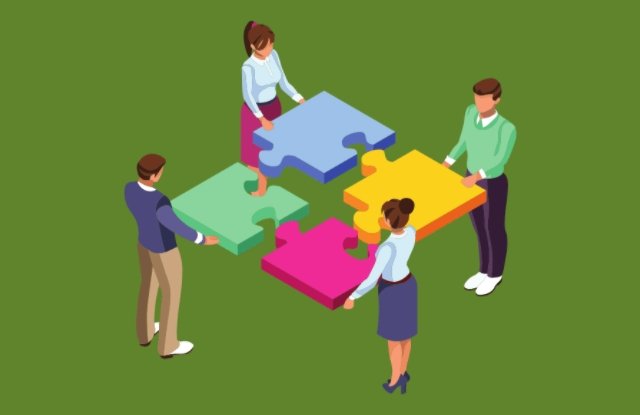
When they study any subject, most people find one of their favorite areas.
And they tend to avoid uninteresting areas that are hard to master.
You might have seen many students who don’t solve the problems on their own, but they directly look at the solutions.
Well, this allows a person to keep things simple, right? Not really!
It’s okay to refer to the solutions if the questions are complex.
But initially, one should focus on solving the various fundamental problems. This allows the brain to form relationships between different aspects.
Sticking to only one aspect of a subject is not helpful for a brain all the time.
You should be able to see the relationships between various aspects.
Taking the same example of learning and playing guitar, it’s fun to play many songs, but one should also know the relationships and differences between all the scales and notes.
We tend to like what is easy.
But not approaching and trying to solve complex problems limits our growth.
Imagine if you only read books that you like reading.
You might end up with limited knowledge.
Imagine if you only focus on earning more money and avoid focusing on your health because it’s boring.
Sure, you might have a lot of money. But it won’t help you enjoy various things, as your health won’t allow you to.
When you learn various aspects of the subject, you connect dots.
Let me give you a little perspective.
Drawing relationships between various elements also helps you become more creative.
And when you become creative, your life suddenly becomes more interesting than earlier.
I remember learning guitar back in my college.
And it changed my mind.
It changed my perception of life — about passion.
So, it’s not just in studies.
You should be able to understand all the aspects of life: Health, Wealth, Relationship, Spirituality, etc.
This allows you to see life from a bigger perspective.
Remember? The more links you facilitate in your brain, the wiser you become.
What we call “EXPERIENCE” is simply a dense network of neurons linked together.
So next time you read anything, don’t ignore the boring details. You never know how a single idea can change your life.
I’d recommend you read books from diverse fields.
This will improve your understanding of this entire universe.
The takeaway: Focus on diverse aspects of any subject to become an expert.
Learning How To Learn Key Takeaways
Here is the list of all the takeaways you learned in this book summary:
- The focused and diffused modes of the brain help us learn anything faster and avoid unnecessary stress on our brain.
- Metaphors are a great way to learn faster.
- Give yourself a decent sleep every time you study something.
- Use visual memory techniques like creating memory palaces, flashcards, etc., to retain the information for an extended period.
- Stay consistent to master any skill.
- The brain is made up of tiny min-computers called neurons.
- Focus on diverse aspects of any subject to become an expert.
Get this book on Amazon:
People who like this book also like
[amazon box=”039916524X, B07HQM9G1R, B099K1XJL8, B08YNRZMB8, 3903386030, 1794581510″ grid=”3″]
Finally, you can learn from real-world experts without leaving the comfort of your home!
The best way to learn is to watch online courses these days!
LinkedIn has a collection of more than 16000+ courses taught by real-world professionals who actually know what they are teaching.
I use LinkedIn Learning to network with professionals and elevate my skills related to digital marketing.
The best part?
As an affiliate partner of LinkedIn Learning, you can claim a 1-Month free trial.
This means:
You can have full access to thousands of courses free for 30 days!
If you purchase the subscription, I’ll be grateful to you. By doing so, you will support me and this website.
And thus help more people…
👉Click here to claim your 1-Month on LinkedIn Premium
Learning How To Learn Review
This is one of those books that show you what they teach right when you read them.
In simple words:
I’m glad I read this book.
We all go after various subjects to learn.
But we never think about learning how to learn.
What I liked about this book is:
The authors use every possible technique that they are teaching in the book.
For instance:
“Humans are visual learners.”
The authors have used plenty of images in the book so that you remember all the concepts.
“Revise and revisit the already learned ideas.”
The authors have given bullet summaries and questions at the end of each chapter to help you revise all the ideas.
They have used many metaphors and funny drawings to help you understand complex neuroscience topics easily.
These are some of the reasons I loved this book.
And yes, this book won’t bore you like other non-fiction books.
There are plenty of jokes and “ZOMBIE” images showing the inside of their brains. They will keep you hooked.
Although the book got a little repetitive after I finished 50%, it still is one of my best reads this year.
I think I will read this book once again soon to check whether I’m following all the techniques or not.
I highly recommend that you purchase this book.
My Book Rating: 9.5/10
(This book deserves an excellent rating like this.
I’ve personally taken a lot of inspiration from the authors’ way of writing and presenting information in a fantastic way.)
Purchase this book on Amazon:
More books to learn faster
[amazon box=”039916524X,1250799376,B08M8DHYBM,B09PMFY92N,B09ZKRF5GX” template=”table”]
Related Reading
If you enjoyed reading this summary, you might also like:
1. Book Summary: Chop Wood Carry Water by Joshua Medcalf
This book summary will help you understand the importance of process and patience.
2. Book Summary: Mean Genes by Jay Phelan and Terence C. Burnham
This book summary talks about how our genes influence many things in our lives. This book has got a similar vibe to this book.
3. Book Summary: Steal Like An Artist by Austin Kleon
This book summary will help you learn about becoming an artist by understanding what creativity actually means.
FAQs about Learning How To Learn by Barbara Oakley
What does learning how Do You Learn Mean?
It means which strategy or technique you adopt to master or learn any skill.
Why is learning to learn important?
Learning to learn is important because many people waste their effort and time as they don’t know how to learn anything efficiently.
What is the most important part of learning?
The most important part of the learning is testing your knowledge and applying it to real-life problems.
Now it’s your turn!
I hope you got extreme value from this book summary.
If you liked it, please share it with your friends so that they also learn various tips and techniques to learn faster.
And if you haven’t already subscribed to my email newsletter…. (What are you waiting for?)
Bonus: Subscribe to my YouTube channel to watch premium animated book summaries for free.

